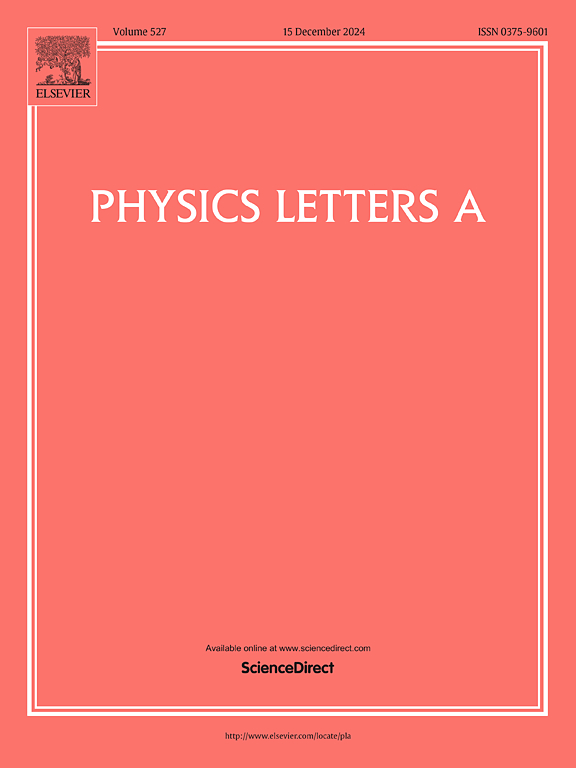Solving constrained BKP hierarchy by boson–fermion correspondence
IF 2.3
3区 物理与天体物理
Q2 PHYSICS, MULTIDISCIPLINARY
引用次数: 0
Abstract
Solutions of –constrained BKP hierarchy with are investigated by boson–fermion correspondence. Firstly, –constrained BKP hierarchy is converted into the fermionic form . Then we determine the conditions for the fermionic field β, which keeps the fermionic form of constrained BKP hierarchy after the transformations for , and . Finally based upon this, the corresponding solutions are given by boson–fermion correspondence.
用玻色子-费米子对应求解约束BKP层次
利用玻色子-费米子对应关系研究了(k,m)约束BKP层次Lk=(Lk)≥0+∑i=1m(q1,i∂−1(q2,i)x−q2,i∂−1(q1,i)x),且k∈Z≥0odd的解。首先,将(k,m)约束的BKP结构转换为费米子形式Ωk(τ0⊗τ0)=12∑i=1m(τ2,i⊗τ1,i−τ1,i⊗τ2,i)。然后我们确定了在α=0, {1,i}和{2,i}时,经过τα→βτα变换后,费米子场β保持约束BKP层次的费米子形式的条件。最后在此基础上,用玻色子-费米子对应关系给出了相应的解。
本文章由计算机程序翻译,如有差异,请以英文原文为准。
求助全文
约1分钟内获得全文
求助全文
来源期刊

Physics Letters A
物理-物理:综合
CiteScore
5.10
自引率
3.80%
发文量
493
审稿时长
30 days
期刊介绍:
Physics Letters A offers an exciting publication outlet for novel and frontier physics. It encourages the submission of new research on: condensed matter physics, theoretical physics, nonlinear science, statistical physics, mathematical and computational physics, general and cross-disciplinary physics (including foundations), atomic, molecular and cluster physics, plasma and fluid physics, optical physics, biological physics and nanoscience. No articles on High Energy and Nuclear Physics are published in Physics Letters A. The journal''s high standard and wide dissemination ensures a broad readership amongst the physics community. Rapid publication times and flexible length restrictions give Physics Letters A the edge over other journals in the field.
 求助内容:
求助内容: 应助结果提醒方式:
应助结果提醒方式:


